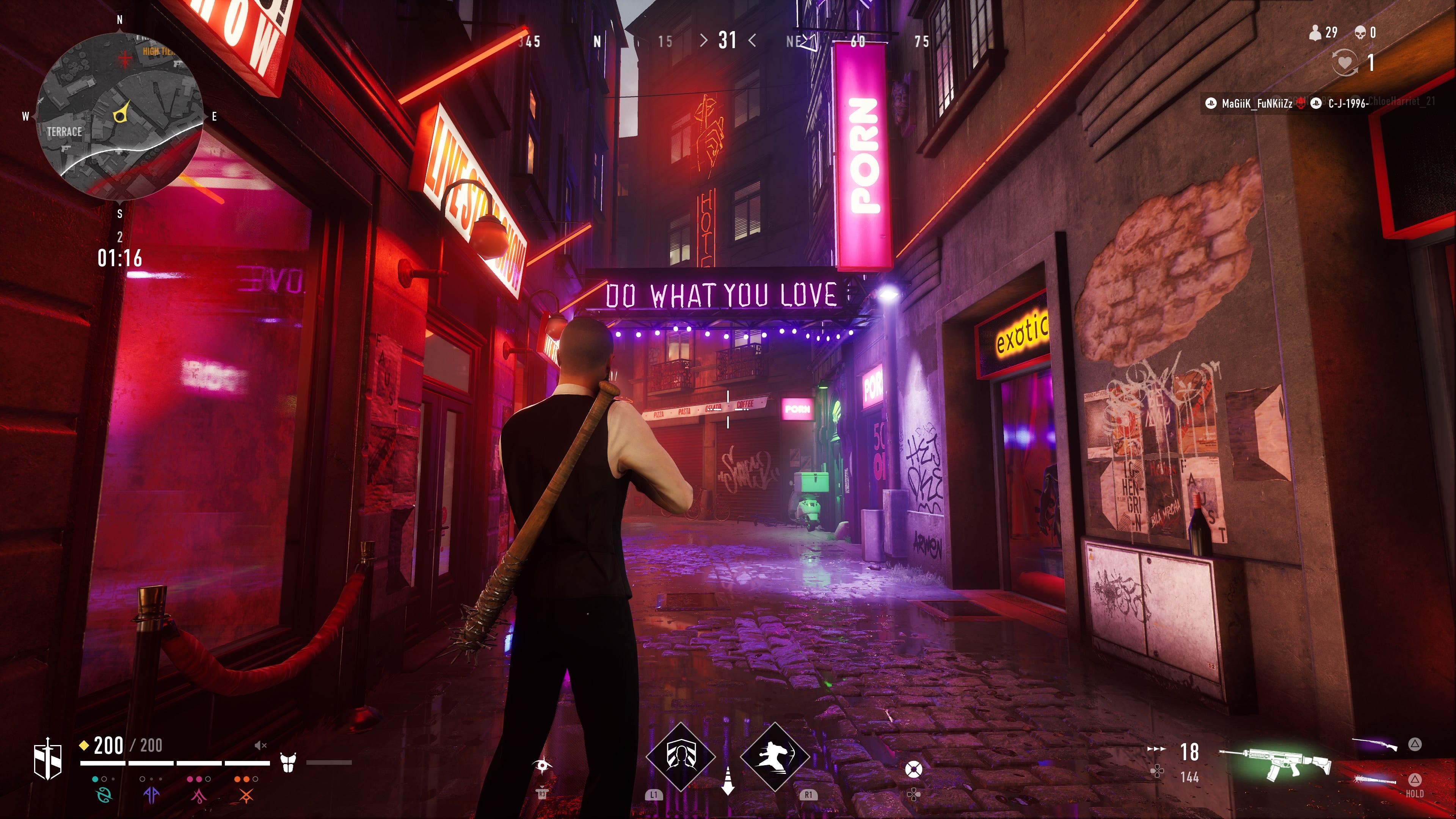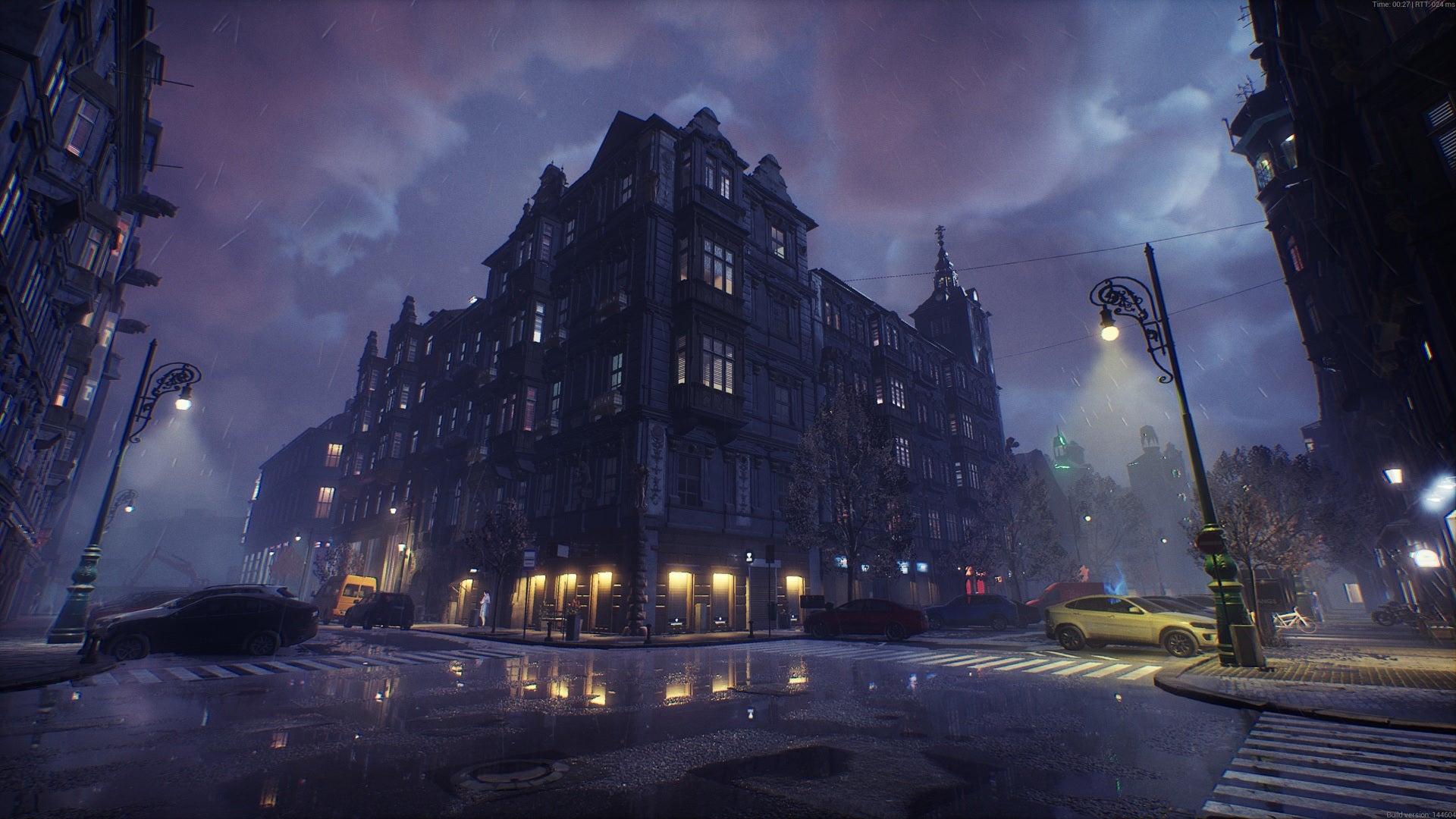To find out more about this decision, I sat down with technical director Anders Holmquist at the Sharkmob studios. While I was there, I wanted to delve into the specifics regarding some of the tech present in Bloodhunt, as well as the choice to move to Easy Anti-cheat from their previous in-house software. VG247: This game is coming to the PS5 on the PC, and in previous interviews it’s been stated that those platforms are the focus right now. Why choose the PS5 as a main option as opposed to other contemporary consoles? Anders: I think the PS5 is, right now, the market leader and Sony has some really, really nice technology – especially for an open world game like Bloodhunt ,where you can’t keep the entire map loaded at the same time, and you need to stream part of the city in and out. And I think, for example, the [UI] improvements that are done on PS5 – you can do some really clever stuff with that just to get the streaming to be fast enough. VG247: In what ways does the PS5 tech that is built into the hardware impact the average gameplay experience for your typical player, in a way that’s meaningful to their own experience? Anders: I think there’s a lot of in-your-face functionality with the lights on the controller, and the adaptive triggers make it a lot more immersive. You feel that you’re in the game, I think a lot more than when you’re playing with the mouse and keyboard (which is a bit static in comparison). So I think that makes quite a lot of difference, and then just in general the performance on the PS5 is quite impressive, to be honest. VG247: You’re using the AMD FSR tech, right? Which allows for a range of different performance modes that players can pick and choose from. Talk me through the importance of having that in your game? Anders: I think, in general, there’s a lot of nice super sampling techniques that make quite a big difference in what kind of resolutions you can have and how well you can get the game to perform. It also helps give the gamers a choice, like one thing they want to push visual quality, or do they want to push just performance? At the moment, with chip shortages and hardware upgrades not always available, it also does open the game up to more machines and people to play it. We’re hoping to make an even bigger impact with things like that in the future. There may be some cool things coming. VG247: I wanted to talk to you about the mocap tech used in Bloodhunt. How does the tech used here – where you can scan in a variety of different clothing and other assets into the engine – directly set the game apart from your competitors? Anders: I think we have an interesting problem which is that we’re an almost realistic game. We’re set in the real world, with real people, and that comes with expectations on how they move and how they act. And then you add on top of this, the very supernatural element of the vampires. So the question is; how do you make that feel realistic while still having this supernatural element? I think motion capture really helps with that: it lets us do the kind of scenes and animations that really pushes the envelope. It really pushes the feeling that this vampire could be real, basically. I would say, I think a lot of studios are moving to using a lot of motion capture. VG247: Is it purely because of how it looks? Or does it come down to ease of use or any other factors? Anders: Yeah, I think it gives you a lot of freedom and control over the animations, and you can produce a lot of animations with a very high fidelity. Mocap used to be a bit wonky. It’s like you recorded somebody doing a nice jump and then you load the data and it was like their leg was just flying out in space. It’s gotten to a point where you can do some really nice stuff. You can see the motion capture data immediately in game in the Unreal Engine, see if it looks good and if it doesn’t, and you can do another take and say ‘okay but try jumping like this’ instead. VG247: Why choose Unreal for Bloodhunt as opposed to other engines? Anders: There are many, many reasons for that. I looked at several engines when we started, and Unreal was the one that was closest to what we were used to. It is a very mature engine built around a bit more of a traditional triple-A style of development. Unity, for example, has a very different flow in how you work with it – maybe a bit harder to work with very large teams. So, Unreal was a very nice fit from that point of view. VG247: Back in early access, there was an issue with the in-house anti-cheat software initially developed for the game. What drove the change from that to Easy Anti Cheat, and what did the team take away from the situation? Anders: We had an anti cheat that was internal for, which worked quite well to be honest. But anti-cheat is always a very sensitive topic, and I understand why. Especially nowadays, it’s gotten to the point where anti-cheat needs to run kernel level because if it doesn’t, all the cheats are going to run and it’s not going to see them. So it comes down to a lot of trust. You’re giving a lot of access to an anti cheat and what we saw from early access was that this wasn’t something that people at least in the west were very used to and that made them nervous and we can understand that. So after Early Access we had a long discussion about what we could do. And I think that the conclusion in the end was to just to make the community feel comfortable, go with something that they knew and had seen before. I really like Easy Anti Cheat, I’ve known those guys since they started a company. And yeah, it was probably the right choice, but it wasn’t an easy one. VG247: Judging from your answer, I take it that you do stand by the original anti-cheat in its effectiveness. Anders: Yeah, I think they were both very effective anti cheats basically. I think there are a couple on the market that work quite well. VG247: It sounds like there’s been a push across the board to include a lot of technical advancements with Bloodhunt? Was that an original intention with this game from the get-go? Anders: No, no, absolutely not. It didn’t start like that. When we started the company especially, we had a lot more modest ambitions. What we very quickly realised was that we are not very good at not being ambitious, it is kind of, it is kind of what we do. All the time we used to joke about that. We were like the worst indie in the world because we were very bad at saying this is enough or this is good enough. We always wanted to push things.

